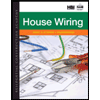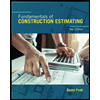Assume a car park facility where the arrival rate is 1 customer every minute, and the service process including pressing the button, taking the card, and waiting for the boom to rise leads to service rate of μ customer every minute. a. Assume the arrival and service processes are stochastic. Using any software (Excel, Matlab, or the one you prefer), plot average delay time (including service time) and average queue size (including the vehicle currently being served) for all combinations of λ = {1,2,3,..,10} and p = {0.1,0.3,0.5,0.7,0.9}. Specifically, we ask you to make 2 graphs (one for average delay and the other for average queue size), where the x-axes contains the different values for 1, and where you make one curve for each p. b. Assume the arrival process is stochastic but the service process is deterministic with rate μ. Using any software (Excel, Matlab, or the one you prefer), plot average delay time (including service time) and average queue size (including the vehicle currently being served) for all combinations of 1 = {1,2,3,..,10} and p = {0.1,0.3,0.5,0.7,0.9} and compare graphically with plots from part (a). State observations from the comparison. c. Calculate the average delay time (including service time) and average queue size (including the vehicle currently being served) assuming the D/D/1 queueing process.
Assume a car park facility where the arrival rate is 1 customer every minute, and the service process including pressing the button, taking the card, and waiting for the boom to rise leads to service rate of μ customer every minute. a. Assume the arrival and service processes are stochastic. Using any software (Excel, Matlab, or the one you prefer), plot average delay time (including service time) and average queue size (including the vehicle currently being served) for all combinations of λ = {1,2,3,..,10} and p = {0.1,0.3,0.5,0.7,0.9}. Specifically, we ask you to make 2 graphs (one for average delay and the other for average queue size), where the x-axes contains the different values for 1, and where you make one curve for each p. b. Assume the arrival process is stochastic but the service process is deterministic with rate μ. Using any software (Excel, Matlab, or the one you prefer), plot average delay time (including service time) and average queue size (including the vehicle currently being served) for all combinations of 1 = {1,2,3,..,10} and p = {0.1,0.3,0.5,0.7,0.9} and compare graphically with plots from part (a). State observations from the comparison. c. Calculate the average delay time (including service time) and average queue size (including the vehicle currently being served) assuming the D/D/1 queueing process.
Engineering Fundamentals: An Introduction to Engineering (MindTap Course List)
5th Edition
ISBN:9781305084766
Author:Saeed Moaveni
Publisher:Saeed Moaveni
Chapter9: Mass And Mass-related Variables In Engineering
Section9.3: Mass Flow Rate
Problem 3BYG
Related questions
Question

Transcribed Image Text:Assume a car park facility where the arrival rate is 1 customer every minute, and the service
process including pressing the button, taking the card, and waiting for the boom to rise leads
to service rate of μ customer every minute.
a. Assume the arrival and service processes are stochastic. Using any software (Excel, Matlab,
or the one you prefer), plot average delay time (including service time) and average queue
size (including the vehicle currently being served) for all combinations of λ = {1,2,3,..,10}
and p = {0.1,0.3,0.5,0.7,0.9}. Specifically, we ask you to make 2 graphs (one for average
delay and the other for average queue size), where the x-axes contains the different values
for 1, and where you make one curve for each p.
b. Assume the arrival process is stochastic but the service process is deterministic with rate μ.
Using any software (Excel, Matlab, or the one you prefer), plot average delay time (including
service time) and average queue size (including the vehicle currently being served) for all
combinations of 1 = {1,2,3,..,10} and p = {0.1,0.3,0.5,0.7,0.9} and compare graphically
with plots from part (a). State observations from the comparison.
c. Calculate the average delay time (including service time) and average queue size (including
the vehicle currently being served) assuming the D/D/1 queueing process.
Expert Solution
This question has been solved!
Explore an expertly crafted, step-by-step solution for a thorough understanding of key concepts.
Step by step
Solved in 2 steps with 6 images

Recommended textbooks for you

Engineering Fundamentals: An Introduction to Engi…
Civil Engineering
ISBN:
9781305084766
Author:
Saeed Moaveni
Publisher:
Cengage Learning

Traffic and Highway Engineering
Civil Engineering
ISBN:
9781305156241
Author:
Garber, Nicholas J.
Publisher:
Cengage Learning

Residential Construction Academy: House Wiring (M…
Civil Engineering
ISBN:
9781285852225
Author:
Gregory W Fletcher
Publisher:
Cengage Learning

Engineering Fundamentals: An Introduction to Engi…
Civil Engineering
ISBN:
9781305084766
Author:
Saeed Moaveni
Publisher:
Cengage Learning

Traffic and Highway Engineering
Civil Engineering
ISBN:
9781305156241
Author:
Garber, Nicholas J.
Publisher:
Cengage Learning

Residential Construction Academy: House Wiring (M…
Civil Engineering
ISBN:
9781285852225
Author:
Gregory W Fletcher
Publisher:
Cengage Learning

Fundamentals Of Construction Estimating
Civil Engineering
ISBN:
9781337399395
Author:
Pratt, David J.
Publisher:
Cengage,